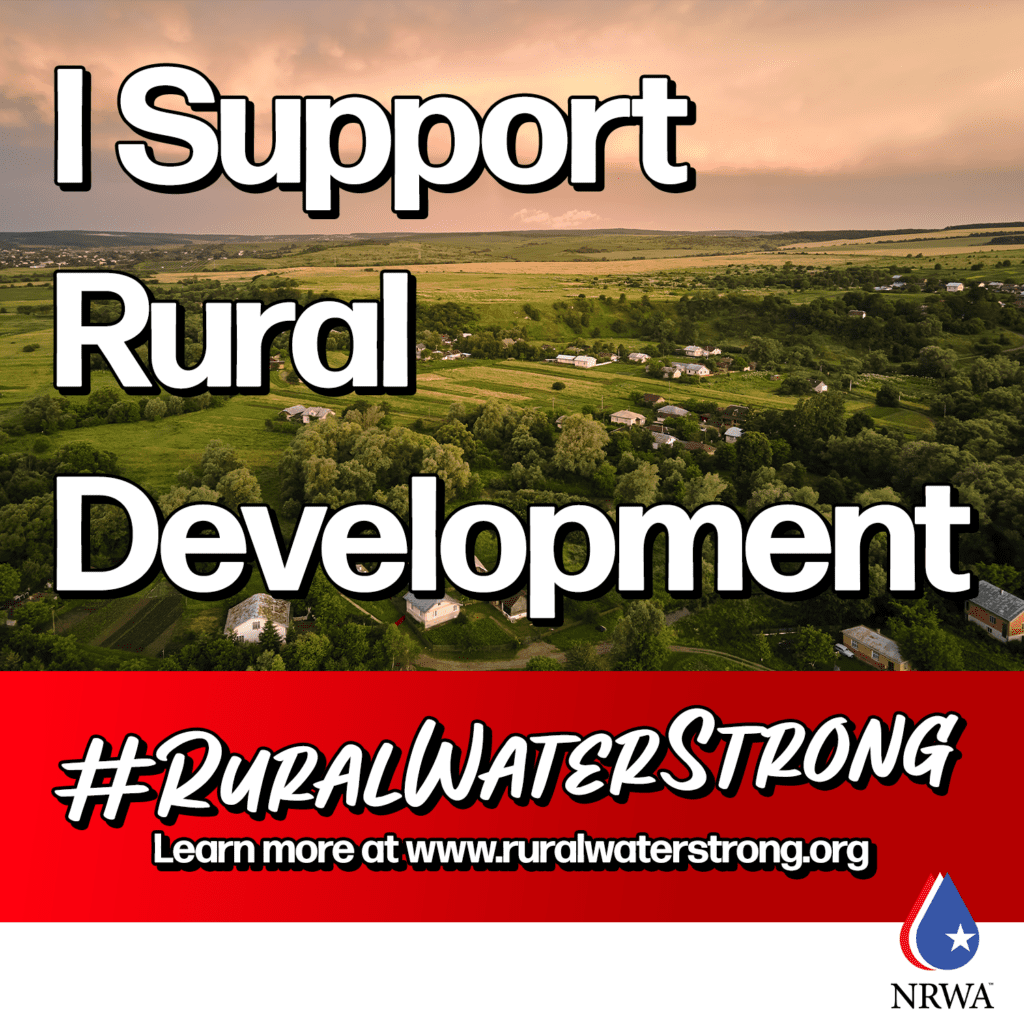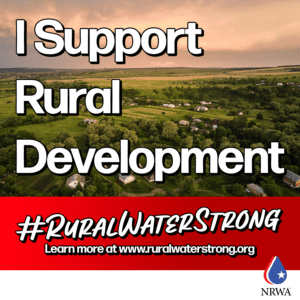Rural Development Water and Environmental Programs (USDA WEP) has consistently supported rural communities in completing necessary upgrades to their water and wastewater facilities.
Today’s Congressional policies and funding decisions are jeopardizing communities in rural America. Budget cuts will leave USDA WEP unable to accomplish its mission.
WEP is instrumental in helping rural America increase economic opportunities, protect public health, maintain affordable water access, and ensure their communities are sustainable.
With WEP funding at risk, your voice is more important than ever. Pledge your support for USDA Rural Development Water and Environmental Programs, as they provide to rural water and wastewater systems that support public health, economic vitality, technical assistance, and affordability in communities across America.
Learn more about how Rural Development helps rural communities below, and at the linked resources.
Rural Development for Sustainability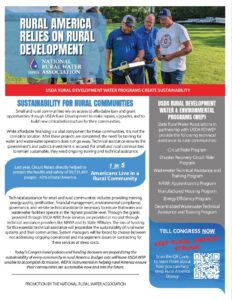
While affordable financing for infrastructure upgrades is a vital component for these small and rural communities, it is not the complete solution. Aftertheseprojects are completed, the need for training does not go away. For communities to remain sustainable, they need ongoing training and technical assistance. Technical assistance for small and rural communities includes training, energy audits, certification, financial management, environmental compliance, governance, and on-site technical assistance necessary to ensure that water and wastewater facilities operate at the highest possible level.
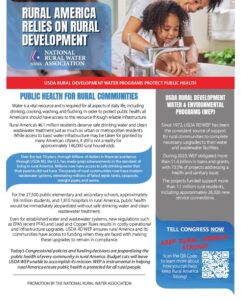 Rural Development for Public Health
Rural Development for Public Health
Water is a vital resource required for all aspects of daily life. While many American citizens may take access to basic water infrastructure for granted, it still is not a reality for approximately 146,000 rural households.
For the 27,500 public schools, approximately 9.8 million students, and 1,810 hospitals in rural America, public health would be immediately jeopardized without safe drinking water and clean wastewater treatment. Even for established water and wastewater systems, new regulations result in costly operational and infrastructure upgrades.
Rural Development for Affordability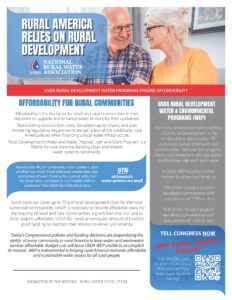
Affordability is the key factor for small and rural communities’ decisions to upgrade and enhance water services for their customers. Skyrocketing construction costs, disrupted supply chains, and ever-increasing regulatory requirements are just a few roadblocks rural America faces when financing critical water infrastructure. Rural Development’s Water and Waste Disposal Loan and Grant Program is a lifeline for funding clean and reliable water systems nationwide.
A grant/loan mix is critical for most rural communities to keep projects affordable. Grant costs can cover up to 75% of total development costs for the most vulnerable communities, which is necessary to provide affordable rates. USDA WEP needs adequate baseline grant funding to maintain their mission to serve rural America.
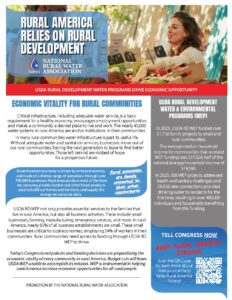 Rural Development for Economic Vitality
Rural Development for Economic Vitality
Critical infrastructure, including water service, is a requirement for a healthy economy. It encourages employment opportunities and makes a community a desired place to live and work. The nearly 45,000 water systems in rural America are anchor institutions in their communities; however, water infrastructure is past its useful life in many communities. Without adequate water and sanitation services, businesses leave rural communities, forcing the next generation to leave to find better opportunities.
